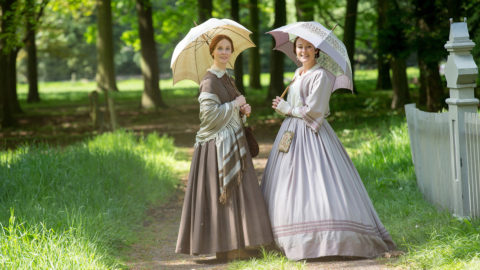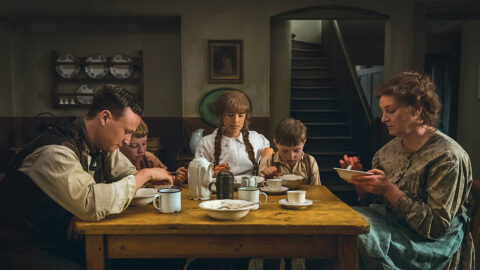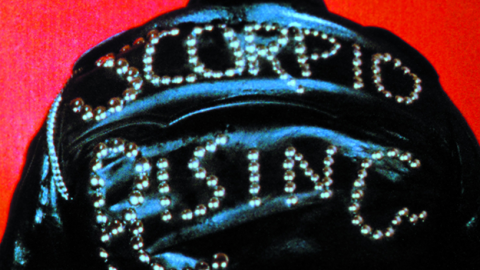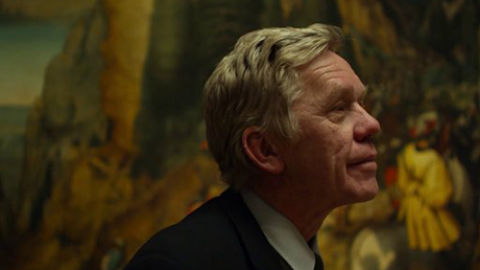By Graham Fuller in the March-April 2012 Issue
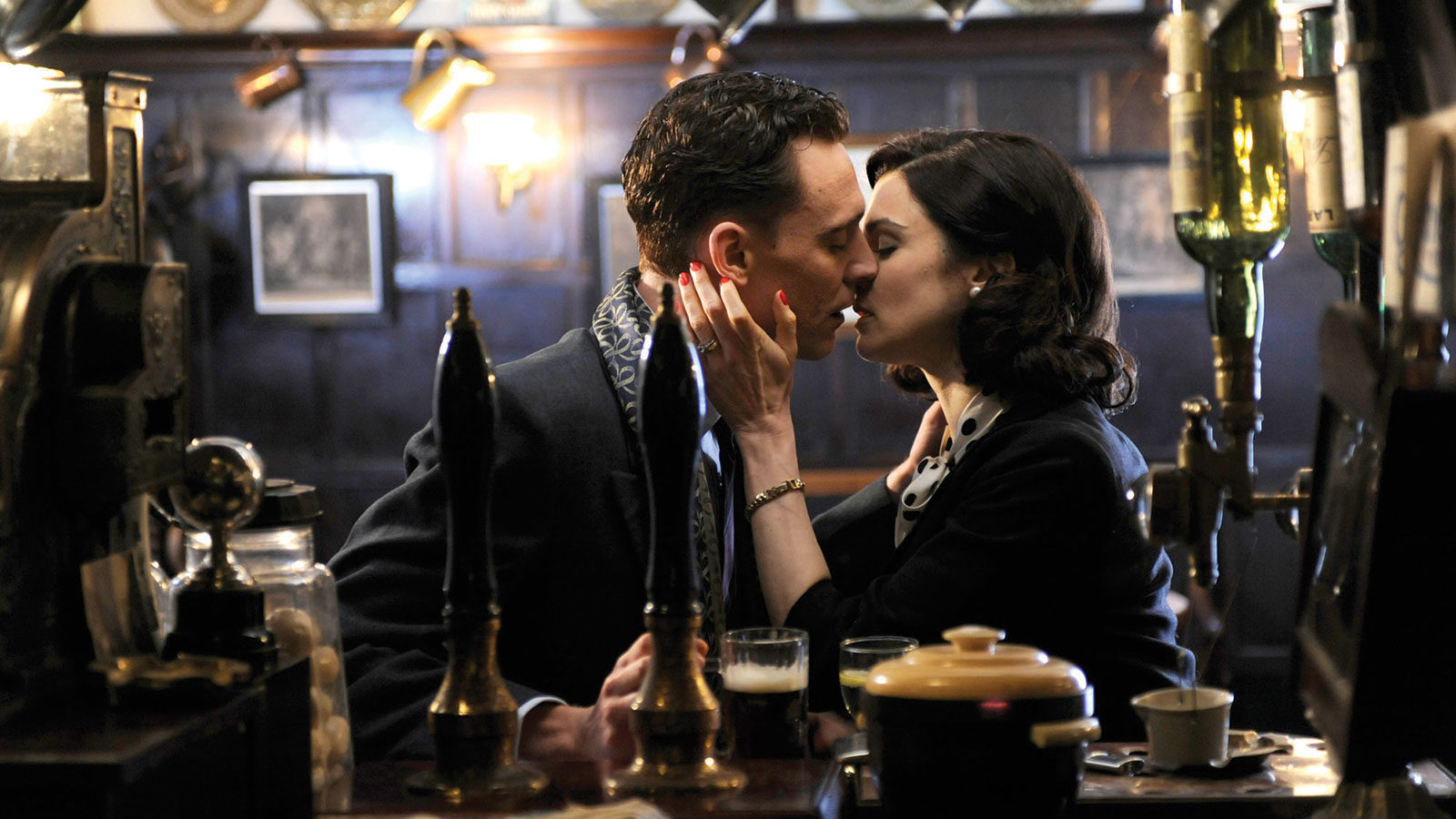
Love Among the Ruins
British cinema’s keeper of the postwar flame Terence Davies fans the burning embers of forbidden desire in The Deep Blue Sea
The agony and perverse ecstasy of unrequited love permeate Terence Davies’ The Deep Blue Sea. Adapted by the director from Terence Rattigan’s 1952 play and set in a dank, depressed London still recovering from the Blitz, it tells the story of Hester Collyer (Rachel Weisz), a 40ish beauty dashed on the rocks of masochistic passion. She has left her older husband, Sir William (Simon Russell Beale), a judge still under the thumb of his ironhearted mother (Barbara Jefford), and their life of stifling middle-class conformity to move into a dingy rented flat with the young lover, Freddie (Tom Hiddleston), a former fighter pilot, charming and exciting in bed, with whom she has become obsessed. Though not without glimmerings of conscience, Freddie is feckless and inconstant. He cannot reciprocate Hester’s romantic intensity, and when he spends her birthday weekend on a “golfing trip” she methodically tries to gas herself. That’s where Davies’ sublime evocation of amour fou, the hallmarks of which are self-confinement and humiliation, begins.
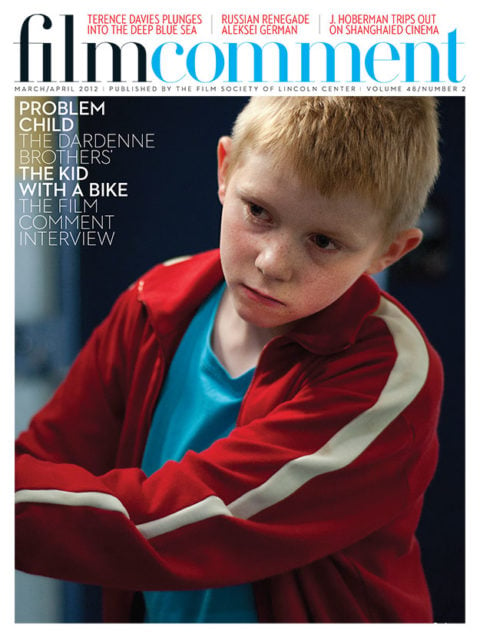
From the March-April 2012 Issue
Also in this issue
The West End’s preeminent mid-century dramatist, Rattigan (1911-77) wrote 27 plays, including The Winslow Boy, The Browning Version, and, just before his death, Cause Célèbre, a rendering of the 1935 Alma Rattenbury murder case that is echoed by The Deep Blue Sea’s tragic triangle and empathy for nonconformist female desire. As Rattigan’s centenary approached, it made perfect sense that Davies, on behalf of the Sir Terence Rattigan Charitable Trust, would be commissioned to contribute a film adaptation of one of the plays. Davies is nothing if not a child of the Fifties. Set in the working-class milieu of the writer-director’s Liverpool youth, Children—the first part of The Terence Davies Trilogy (1976-83)—and his subsequent British fiction films, Distant Voices, Still Lives (88) and The Long Day Closes (92), are bittersweet paeans, suffused with loss, to postwar austerity Britain, in which Davies combines his own customized brands of classicism and romanticism. Cut from a similar cloth as these earlier movies, The Deep Blue Sea partakes, too, of the malaise that afflicts the socially compromised Lily Bart in Davies’ 2000 film of Edith Wharton’s The House of Mirth.
That film marked the last occasion on which I interviewed Davies for Film Comment. In the intervening years he has written A Walk to the Paradise Garden (01), an original radio play, a two-part adaptation of Virginia Woolf’s The Waves (07), also for BBC Radio, and directed one film, Of Time and the City (08), a poetic documentary about Liverpool. The paucity of movies is a sad comment on the lack of opportunity for one of Britain’s greatest directors. Looking back at the House of Mirth feature, I see that I wrote, “Chatty, self-deprecating, and courteous, the 55-year-old Davies…” Except that he is now 66, I discovered that nothing had changed when we talked about The Deep Blue Sea.
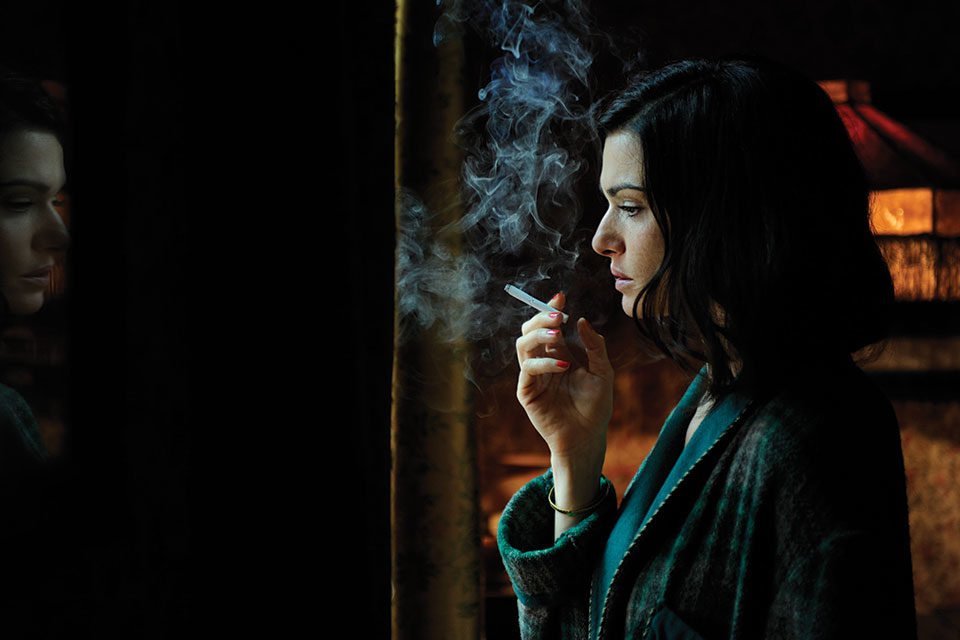
How familiar were you with Terence Rattigan’s work?
I’d never seen the plays on stage, but I had seen, on television many years ago, the 1952 Anthony Asquith film of The Browning Version, which I think is the best because it’s got that wonderful performance by Michael Redgrave. And I remembered going to see Separate Tables [58], with Burt Lancaster and Rita Hayworth, which I think is really good. So I said I couldn’t do either of those because I’ve seen the films and they would inhibit me. I said, “What I’ll do is read the entire canon and see which I think I can do the best.” The Deep Blue Sea was the one I responded to the most.
I hadn’t adapted a play before and was very worried about it. They told me my first draft was tentative and I said, “I know it is, because I’m very frightened of the material—can I do it from Hester’s point of view?” In all his plays, Rattigan makes the first act about exposition—what happened before the curtain went up—and that’s not terribly interesting: if you can show something, you don’t need someone to tell you about it. Once I knew I could write it from Hester’s point of view, I knew I could let go of a lot of the exposition because it opens up her consciousness and her drifting in and out memory as she waits for Freddie to come home. Basically, the first act is collapsed into 10 minutes with the Samuel Barber Violin Concerto. You see two men and this woman and there must be some sort of relationship between them. And then you explore what those relationships are and how she came to be where she is and what decisions she made. It’s a very simple structure.
You start with a shot that cranes from what could be a bomb site up to Hester’s window, which is bookended at the end of the film with a crane shot away from the window.
Once I knew it was to be seen from Hester’s point of view, it was a question of how to get into it. Those shots come from Young at Heart, which was the first Doris Day film I saw. It starts with a wide shot on a street that’s been built on a soundstage and you hear the title song. When it finishes, you drift into the window. And at the end, when everybody’s got to live happily ever after, the camera pulls out of the window to the position of the opening shot.
Was it a conscious choice to copy those shots?
Absolutely not. It was only the other day I realized it. I wanted to see a musical. I love Doris Day and I thought, “I’ll watch Young at Heart to cheer myself up,” and when I saw it, I thought, “My God, that’s where those shots come from.” And that’s the way influences should work. When they come out, through you, they are refracted because they are unconscious, and that makes them more interesting.
And Brief Encounter was another influence?
Oh, gosh, yes, I’ve stolen two shots from it. One is when Laura [Celia Johnson] goes to throw herself off the station platform. The other is when she’s sitting in the library with her husband before she starts recounting the story—we echo that when you hear the first big violin tune come in and Hester remembers meeting Freddie for the first time. Those shots are directly lifted from Brief Encounter, which, for all its dreadful dialogue and some dreadful acting, still has an incredibly moving central story. Celia Johnson is unbearably moving in it.
The Deep Blue Sea gives vent to female sexuality in a way that was forbidden in a film like Brief Encounter. Women were forced to repress their sexuality.
It’s not so much that it was repressed—it just wasn’t spoken about. Anything sexual was considered unseemly. For instance, in the early Fifties trousers came in for women. Because they were usually quite tight, they were considered tarty, so very few women wore them. But men were repressed as well, that’s what people don’t realize. Men and women did not know about sex, they did not talk about sex—it wasn’t as ubiquitous as it is now. There was still that feeling that sex was something to be endured, not enjoyed.
But what comes from that repression is something more powerful, a way of implying sexuality. I wanted to see Hester and Freddie in bed together, but I wrote in the script “These scenes are not explicit,” because explicit sexual scenes do not tell you anything. But if you show the sensual nature of flesh on flesh, of flesh against cloth, that becomes erotically charged.
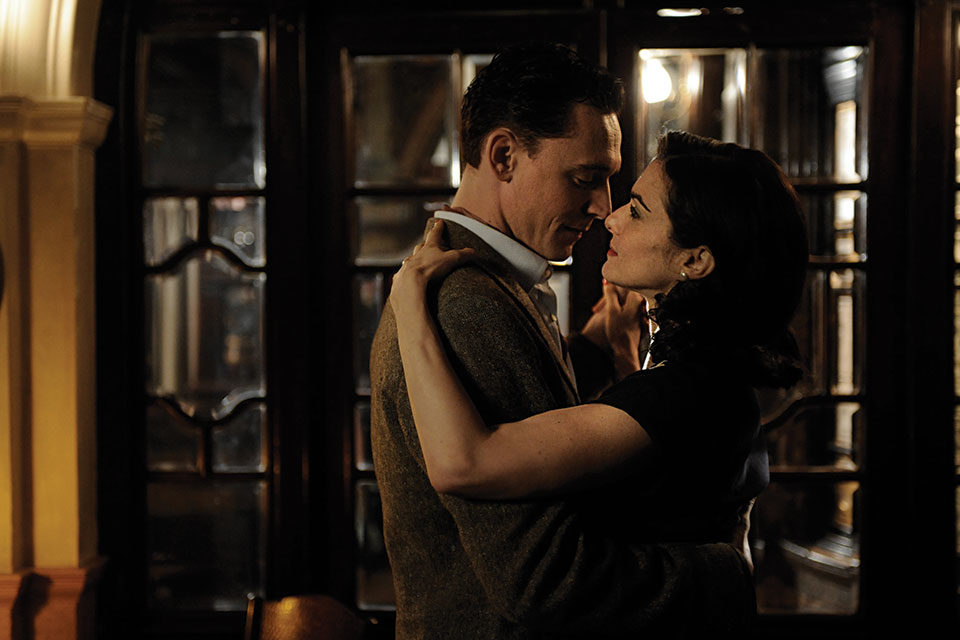
Although Hester is the protagonist and the character with whom we most empathize, you make us feel for Sir William, who suffers the humiliation of being told by his wife that she’s sexually obsessed with another man.
I grew up when Douglas Sirk was at his height—All That Heaven Allows, Magnificent Obsession—and then I discovered on television Max Ophüls’s Letter From an Unknown Woman. I also grew up with later Joan Crawford and later Bette Davis, but then I discovered their earlier work. They were all very powerful in one way or another. So it seemed completely natural to me to make a women’s picture, but what I didn’t want was that the woman in it should be a villain, because none of those characters [in women’s pictures] are.
The backstory is that Hester had married Sir William Collyer because he’s gentle, he’s cultured, and they share a wry sense of humor. There may not have been much sex—perhaps he doesn’t have much of a libido—but when she married him that was probably enough, and it was probably enough for quite a lot of people. And then she discovers her sexuality after all these years, probably has her first orgasm, and falls head over heels for this young man, so she leaves her husband. When he asks her to come back, he says, “Can’t you see what I’m offering you?” She says, “Yes, and do you have any idea how difficult it is to refuse it?” And it is seductive and she is still tender to William and kisses him on the mouth—it’s not a peck.
I think he’s got a deep sense of compassion and, in a way, doesn’t mind her saying she’s obsessed with this other man. The first thing he asks her when they meet again is, “Has he deserted you?” He’s concerned for her. I think he has found real love and that at the end Hester has found it, because she says to Freddie, “If you are happier without me, I will let you go.” That’s real love.
Rattigan, of course, was gay. Do you think he was thinking of his own forbidden desires when he wrote Freddie, or was he more invested in the idea of Hester’s womanhood?
There was a myth that Rattigan had written it for two men, but I heard from [co-producer] Sean O’Connor, who had known Frith Banbury, who directed the play in 1952, that he had never written it that way. If he had done, it would never have been staged because homosexuality was against the law then. But what had happened was that Rattigan’s former lover [the actor Kenneth Morgan] had gassed himself [over his loss of a subsequent lover] and that had been the springboard for the story.
Like a lot of gay writers and directors, Rattigan could do women rather well. That’s not a backhanded compliment to myself—I’m thinking of someone like George Cukor. One reason is that there’s a sort of bond between women and gay men. You can come across women who are very nasty about gay men, but they’re quite rare and I’ve only ever come across two. Rattigan, I think, was fascinated by the nature of sexual love. I don’t think he portrayed it particularly well, but that’s partly because he was writing in a period when you couldn’t say very much about it. Some of the stage directions in The Deep Blue Sea are very vague. At one point, he says that Hester holds Freddie in an almost ugly way. What does that mean?
Greedy, possessive?
I don’t know. Perhaps she is very physical—and perhaps Rattigan thought that was rather vulgar.
This is very much a Terence Davies film. I’m thinking of the way you show static groups of people enjoying sing-alongs—for example, the drinkers in Freddie’s pub and the shelterers on the Tube station during the Blitz, whom you track past to arrive at Hester and William. Do you create these kinds of tableaux out of instinct?
Yes, but I don’t see them as tableaux. It’s very difficult to look at your own style and analyze it. That’s simply the way I see it. I can’t see it the way that you can.
The sing-alongs were obviously a considered choice, though.
Yes. It was important to show the cultural differences between Hester and Freddie. She’s grown up with classical music, ballet, and poetry. Freddie likes light popular culture, such as listening to Educating Archie [an enormously popular comedy show featuring ventriloquist Peter Brough and his dummy Archie Andrews] on the radio. He knows all the songs of the period and likes going down to the pub and taking part in sing-alongs. Hester tries to go along with that, and it’s charming she doesn’t know the words of the song they’re singing. But when she takes Freddie to an art gallery he’s bored and makes a silly joke—he won’t even try. I think that gives them more depth.
Yet Freddie’s not unsympathetic. He can’t adjust to coming back from the war. He’s kind of a lost soul.
What do you do when you helped save the country from invasion, and you come back from the war and it’s broke, it’s drab, everything is dreary? The ecstasy of Freddie’s life is over and he’ll never know again the intensity of flying on a sortie not knowing if he’ll come back. Life on Civvy Street is obviously going to be more dull. What angers him is that Hester’s prepared to kill herself for what he thinks is a trivial reason: he forgot her birthday. He thinks, “I went up in the air every day with my mates and they got killed, and you’re about to throw your life away. I can’t understand it.” He’s also furious that she makes him feel as though he is responsible for her decision, and, of course, he isn’t, even though he was the trigger. But, yes, I think he is a lost soul, and I think he’ll go to South America, as he says, and become a test pilot, and he’ll probably get more and more drunk until he’s in his fifties and boring people with his stories of the war.
Hester’s idealized love for Freddie is contrasted with the more enduring, self-sacrificing love epitomized by her landlady, Mrs. Elton [Ann Mitchell], who tells Hester that love means wiping the arse of your incapacitated husband.
That’s not in the play. It’s the quiet kind of love that is completely pragmatic. She says to him, “You were a real dish, weren’t you?” She remembers that because that’s why she fell for him. I was very pleased with that scene because I wanted a working-class woman who is honorable and no-nonsense to say, “A lot of rubbish is talked about love. This is what it’s like.” She’s telling the truth.
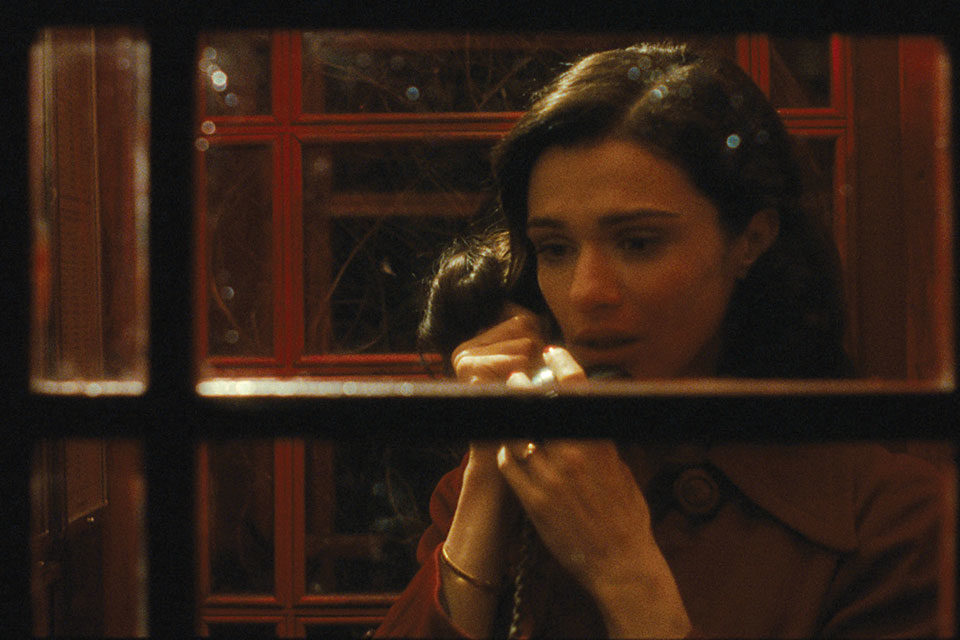
Although the film is on the dark side visually, in keeping with our perceptions of post-war Britain, the palette is still full of muted colors. Why did you make that choice?
When people make films about the Fifties, they often get the look wrong. There were hardly any primary colors, for instance. You might have seen them at school where we had gummed paper that was bright red, yellow, and blue, but you didn’t see them normally. The palette was rather smudged, as if all the colors were worn or washed-out. And when someone did wear a bright color, it stood out—if a woman was wearing a bright piece of clothing, you’d think, “She’s like Ava Gardner.” But you didn’t see it that often. So I know what it looked like and felt like. We obviously narrowed the range of colors, and we softened them by putting a net over the lens so that the only really bright color you see is that of Hester’s wonderful claret coat—the one good coat she took with her when she left William. It’s extraordinary, that coat.
No one wearing it could be anything but passionate. Why did you use the Samuel Barber Violin Concerto?
Again, it’s instinct. I think it’s one of the great unsung 20th-century violin concertos. I’ve known the second movement for a long time, and when I was writing the script it just came to me—I knew it would be right. In the same way, I chose “You Belong to Me” for one of the sing-alongs. I remember listening on Sundays to Family Favorites on the BBC Light Programme. It played songs for people in the Forces [British military] in Germany, Aden, wherever they were. One lovely Sunday lunchtime, my mum switched on the radio and Jo Stafford was singing “You Belong to Me.” I walked to the front door and looked out, and all the doors and windows were open and everyone was listening to it. I never forgot that, and I thought, “I’ve got to use it in the film,” because the lyrics are so apt. They’re about the man being away and the woman reminding him that he belongs to her.
I associate your films with a deliberate elegiac slowness that impresses images on our minds in a not dissimilar way to still photography. Do you remember how you arrived at that slowness?
I don’t. This is also difficult to talk about because I don’t see my films as slow, though I know some people think they’re bloody interminable [laughs]. Very often, tracking shots are timed to music, so that tends to give you a certain pace, even if you’re just moving away from a cloud of cigarette smoke hanging in a room. I’d say it’s measured rather than slow, but I can’t discuss it with any degree of accuracy.
Rattigan was a critic of middle-class values. This emerges most strongly in your film in the scenes that show Hester and Sir William staying in the home of his repressive mother, who won’t even let them sleep together as a married couple.
That wasn’t in the play either. The root of those scenes comes from when I came to stay with someone in London many years ago. The mother was similar to that. I couldn’t do a thing right. I knew what it was like to be in company with someone who made it clear that whatever you did, it was wrong.
Your films explore certain feelings—desire, misery, elation, self-pity—in a way that might be described as un-English, and yet repression, silence, and self-control are a component of them. I was very struck by the way Hester, after her suicide attempt, behaves quite stoically.
Not only did I grow up in a time when that was normal, but my mother was particularly stoic: “These are the cards I’ve been dealt, now I’ll get on with it.” And she did get on with it and that is, I think, rather heroic. Now everyone has to write a book or have a documentary made about it. Back then, those avenues were closed. There was a time when people did behave in a way that was considered seemly.
And, in the end, Hester is heroic, too. She takes Mrs. Elton’s advice—it’s best to live, no matter how hard it is.
Graham Fuller is a freelance film critic based in New York.



